Dozens of black, wide-open eyes are staring down at us, curious and intelligent, as ears twitch and bodies hang upside-down. “This is their second chance at life,” Tamsyn Hogarth says quietly of this batch of grey-headed flying-fox pups orphaned in a starvation crisis facing the species during its 2023–24 breeding season along Australia’s south-east coast.
Wildlife carer Tamsyn is head of the Melbourne-based Fly By Night Bat Clinic, and these pups in her care are just a few of the many hundreds of orphans left vulnerable by a wildlife crisis that has astounded Australia’s bat rescue and carer community.
When I visited her in February 2024, Tamsyn was caring for 86 pups and the number was climbing. “It all began to unfold,” she says, “in September 2023 in south-eastern Queensland and northern New South Wales. We had reports of large numbers of females experiencing miscarriages and premature births – an evolutionary event that occurs when food is scarce and the adult is unable to sustain both her own life and that of her baby.” This was soon followed by observations in Victoria of pups dropping from the sky, too undernourished to be able to hold on to their mums (and their mums probably too weak to do much in response).
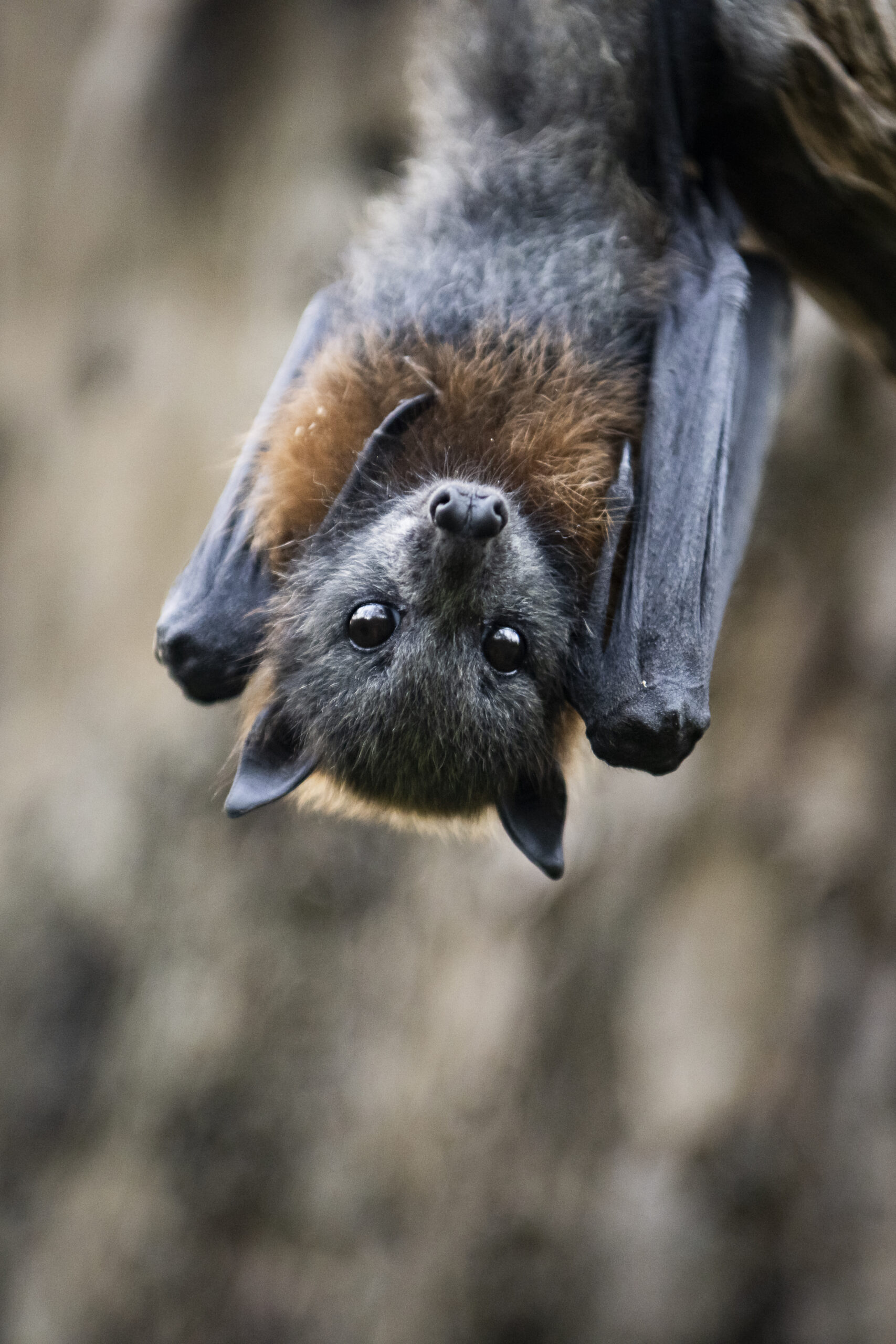
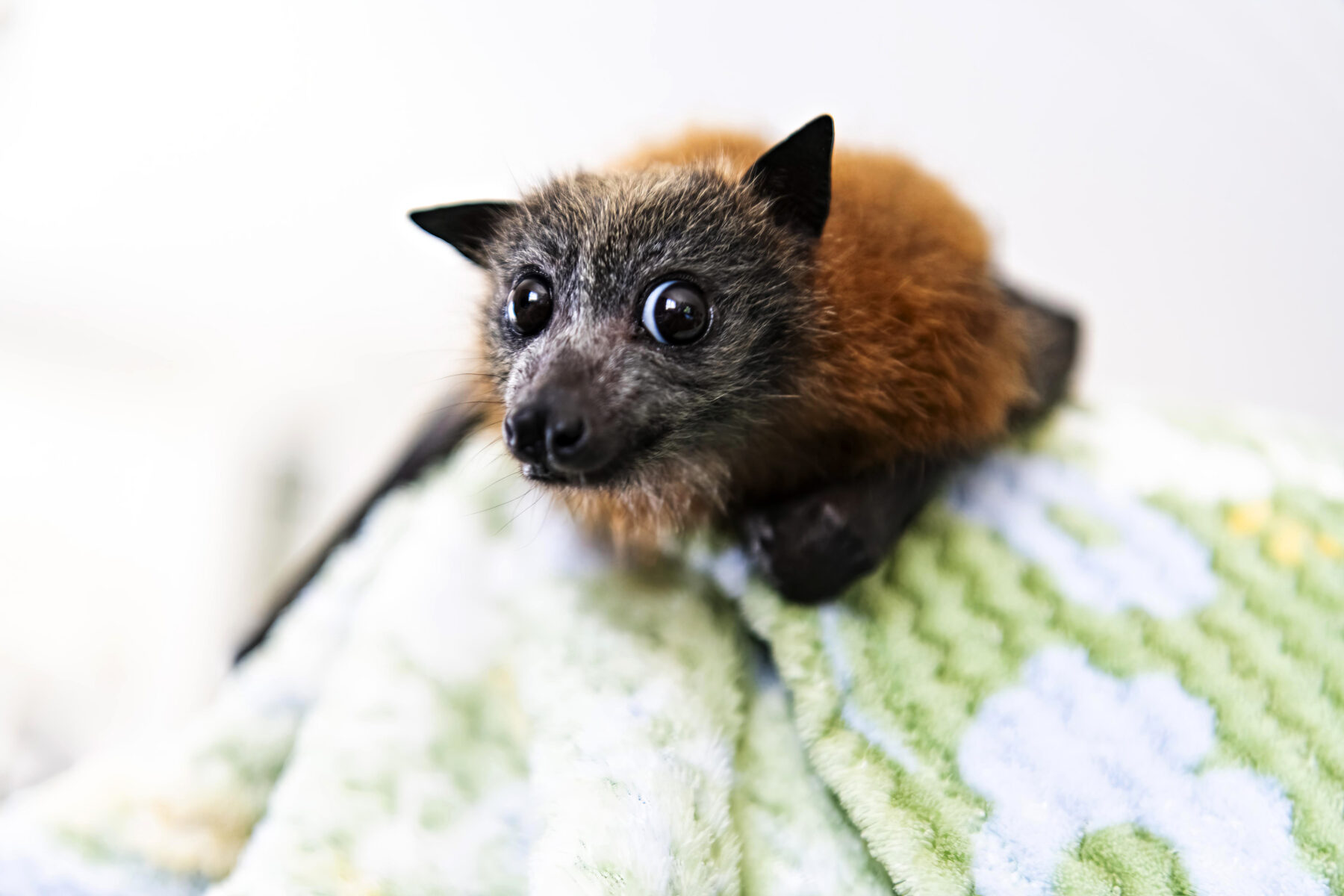
Rescuers and carers were inundated with calls for help. As we speak, there are 440 in care, with many more coming in every day. According to the carers, a conservative estimate of the deaths so far is 1500. “We have never seen anything like this event,” Tamsyn says. “It’s been impossible to keep up with just how many have died.”
The species begins mating January–April each year, when large camps form at established sites. Females give birth October–December to a single young that’s carried by its mother for 4–5 weeks. The females lactate for 3–4 months, meaning the pup is dependent for that period.
In Victoria in 2023, transient camps were being created, based on where food was available. Orbost, in south-eastern Victoria, was one such location, where the camp grew to about 50,000 animals. By early November 2023 more than 100 pups were in care, shelters were stretched beyond their means and it was clear to the bat rescue and carer community that it was going to be a particularly devastating season for the species. The pups were arriving underweight or emaciated and often in need of intensive care.
Normally in a bad year, carers have only 50–70 pups for the entire season of September–March. Common causes of fatality for mothers include electrocution on powerlines, entanglement in barbed wire or wide-aperture fruit-tree netting.
The grey-headed flying-fox is endemic to Australia. Since European settlement, along with the other flying-fox species that occur here, it’s been subjected to dispersal attempts, demonisation, and acts of cruelty, such as cannons discharged at flying-fox camps for sport during the 19th century. Habitat loss and animal-control actions labelled as “pest management” have contributed to a heavy decline in the grey-headed flying-fox population. Climate change and extreme heat events are significant factors affecting their ongoing survival. The species has been listed as vulnerable under the Environment Protection and Biodiversity Conservation Act 1999 (EPBC Act). In December 2021 the species was added to the IUCN Red List of threatened species.
Spectacular pollinators
Australia’s flying-foxes are vital pollinators of our flowering forests and a raft of species, humans included, rely on that. Each night grey-headed flying-foxes disperse thousands of fruit seeds each via their feeding as the species services forests from southern Queensland through to South Australia. That’s impressive enough, but physiologically this megabat is even more spectacular. For example, its wingspan, made up of a complex network of membrane, veins, muscles and bones, can extend more than 1m and reveals itself in a transparent brown glow when the animal is flying through sunlight.
It’s in the spring and summer months, as they follow the warmer weather and flowering events to feed and raise their young, when we see them most often. Yarra Bend Park, just 6km from the Melbourne CBD, is one of the camps that can grow to 50,000 individuals. But this year, the park has also become an orphanage and graveyard for pups.
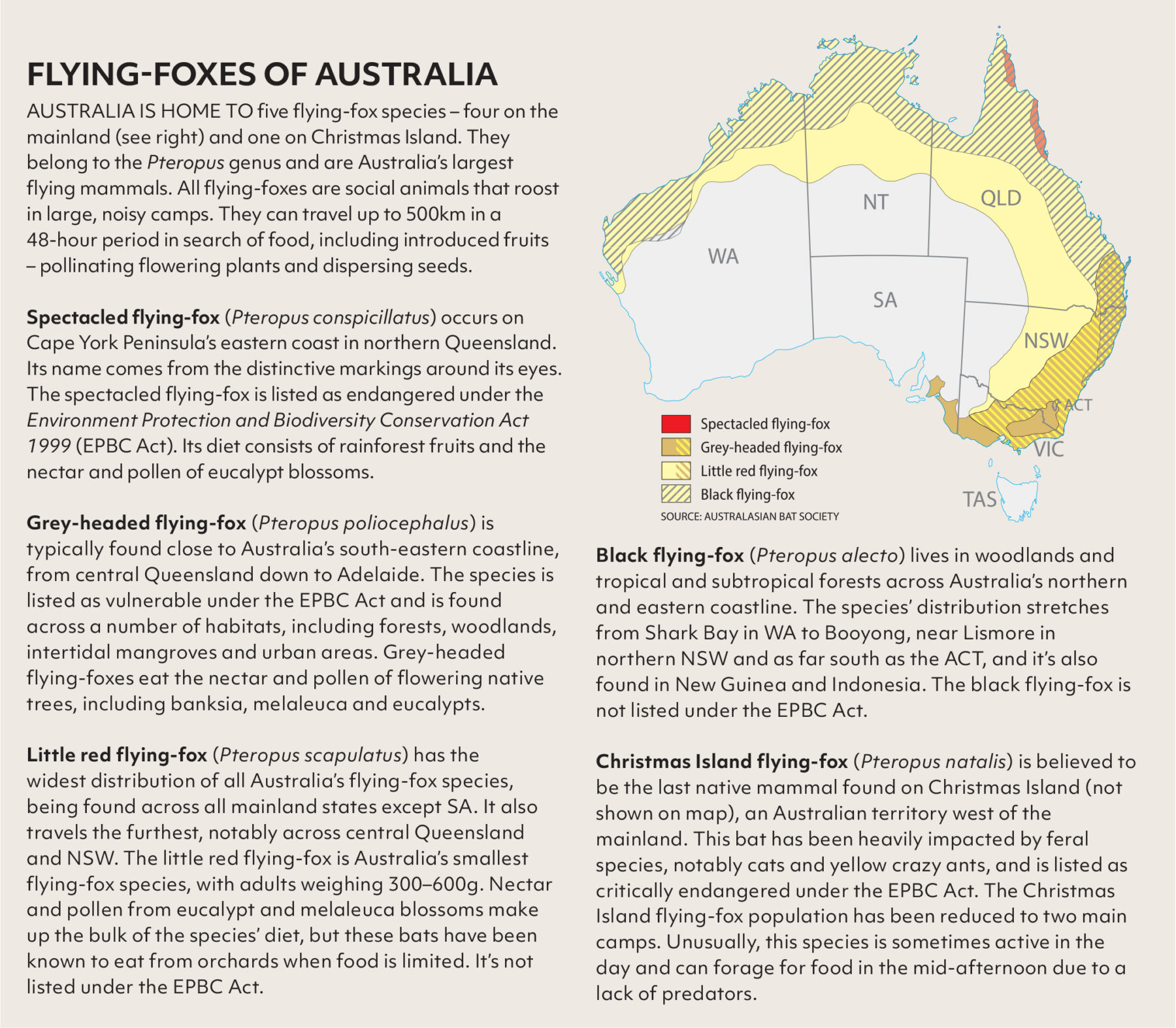
The park is a popular spot for tourists, walkers, bikers and kayakers, with several trails and points of access. But the standout feature for visitors this year is that it’s not hard to spot an orphaned or dead flying-fox pup.
The park is well visited, meaning that calls have come in hard and fast for rescues. The attention has meant that a great number of orphaned pups have been saved from a drawn-out death. The rescues can often be a precarious exercise for wildlife rescuers, who have to test their agility and use netted poles up to 18m long to reach the pups.
You may even hear a pup before you see it, chirping its distinctive call. It’s achingly sweet, but when left unattended, the pup will make a desperate attempt to climb further up the tree, only to eventually drop off to where a fox can nab them come nightfall. It’s a jarring experience to walk through this area. On the one hand, it’s a wildlife marvel to see a flying-fox camp up so close, but it is countered with the sounds of speeding cars on the highway, and now dead pups littered in the trees and on the ground.
An unknown cause
Near the end of 2023, 10 to 15 pups a day were being rescued and delivered into care. Meanwhile, the number of mothers – with their need for continuous food to enable lactation – grew and so the situation became increasingly dire.
“We don’t know the root cause of this starvation event, but, given eucalypts are their primary food source, it’s possible it’s related to the high rainfall and storms we saw along the south-eastern coast,” says Melbourne local Emma Hood, who’s been a wildlife rescuer for seven years and a carer for four.
“This, of course, is on top of a changing climate and climatic events, the Black Summer fires [of 2019–20] and continued habitat destruction,” Emma adds. “When they can’t find their native food of pollen and nectar, that’s when they venture into backyards and farms. So, secondary to this starvation event is the rise in fruit-tree netting entanglements where the mum will never make it back to her pup.”
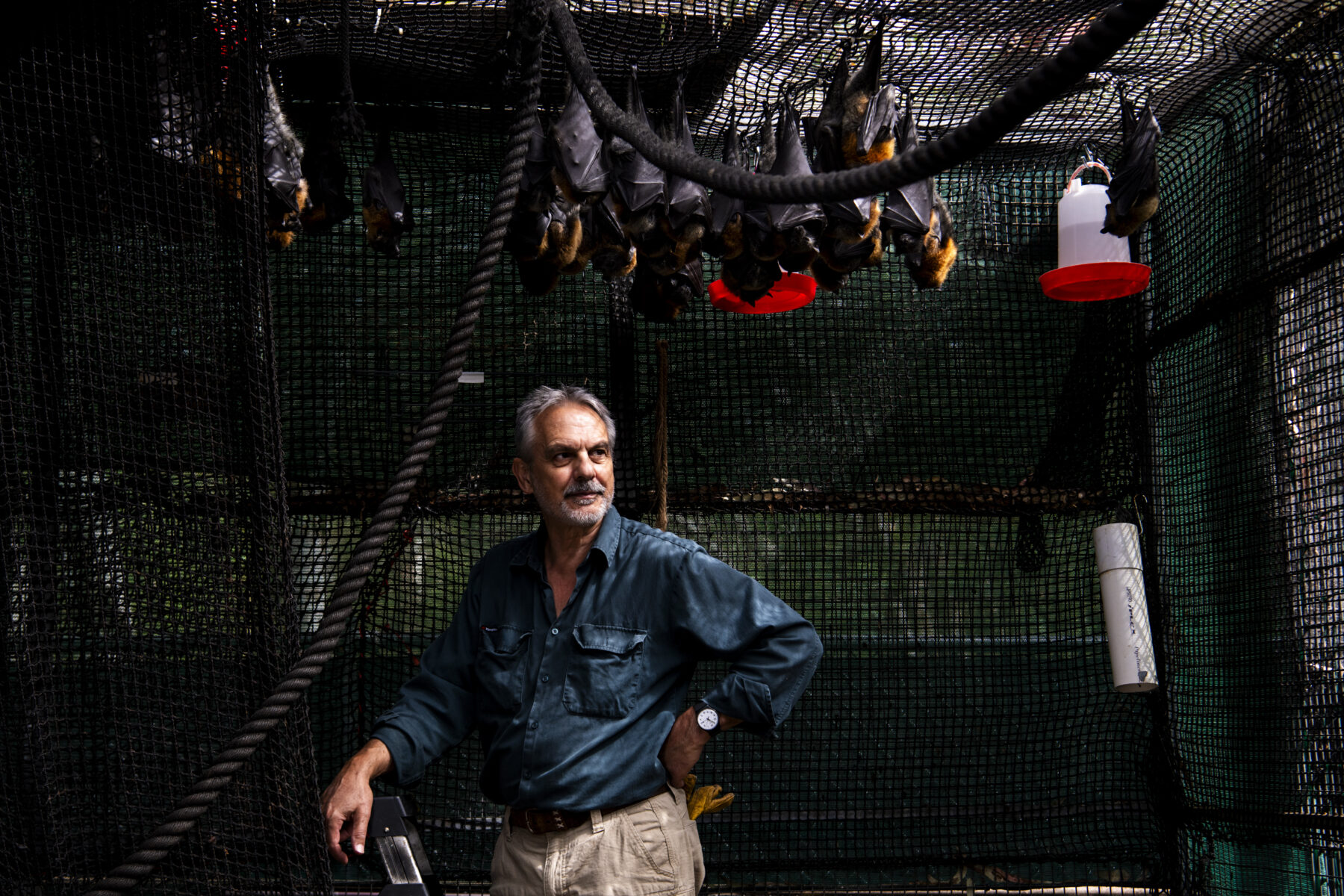
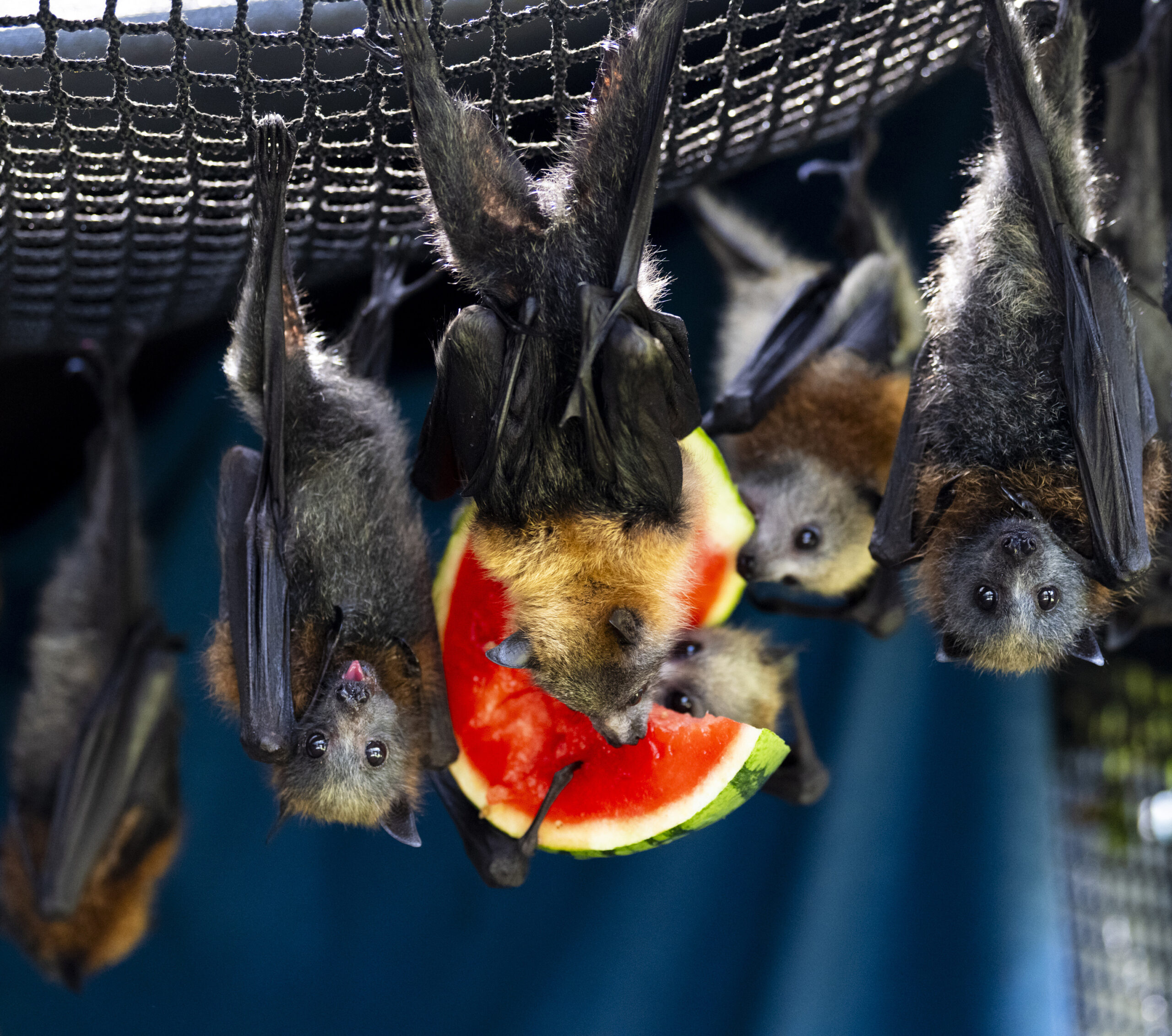
Emma says nothing could have prepared carers for what came next, over Christmas. Rescuers got a call for a bat stuck in netting on a cherry farm in regional Victoria on 23 December. By mid-morning on Christmas Day there were five needing rescuing and that’s when the red flag started waving. More than 80 bats (mostly lactating females) desperate for food were eventually caught in the nets and an “all hands on deck” effort was launched by rescuers to save as many as they could.
The culprit here was the large-aperture fruit-tree netting, made illegal in 2021 for sale and private use in Victoria, but which is still legal for commercial use. “It was really great the farmer let us on to the property – that he allowed rescuers in,” Emma says. “According to the law, he had done nothing wrong. This level of entanglement had never occurred before, and no-one could have predicted what was going to happen at his farm – not on this scale anyway. “I was overwhelmed at the community effort to help and rescue these poor animals. More than 60 were released that day, while 10 or more went into rehabilitation, where we could monitor die back – a process of wing and limb death that occurs days after the injuries occur. We need to get rid of these wide-aperture nets, across the board, and replace them with wildlife-friendly nets.”
Tragic aftermath
In the aftermath, Emma collected several dead specimens and froze them for analyses to be written up in reports about the event. Terror and pain are evident on their faces. Emma pulls them from the freezer bag for inspection and tears well up in a display of empathy and compassion. But she regains her composure quickly – there are hungry mouths to feed and injuries that require attention. There are the torn wings of adults and a three-week-old pup, Cillian, who needs to be cuddled constantly to replace the comfort he’d normally get from his mother.
Emma is part of a small but fiercely dedicated and passionate group of wildlife rescuers and grey-headed flying-fox carers that stretches from southern Queensland through to Adelaide. The group is predominantly self-funded, and all members volunteer their time, energy and resources. Grants, donations and the generosity of the public help to support them. However, many feel that, in times of crisis such as this, there is lack of infrastructure and a shortfall of systems in place to support this nationally threatened keystone species, both at state and federal levels.
“Why can’t we see a place like Yarra Bend Park get the infrastructure, protection and funding that the Melbourne Royal Botanic Gardens receives?” asks Lawrence Pope, co-founder of the Friends of Bats and Bushcare group in Melbourne. “We see tourists coming to see the bats [here] all the time, particularly for the dusk fly-out, which is a sight to behold. Places like Yarra Bend Park should be at the top of the list for funding and wildlife conservation.”
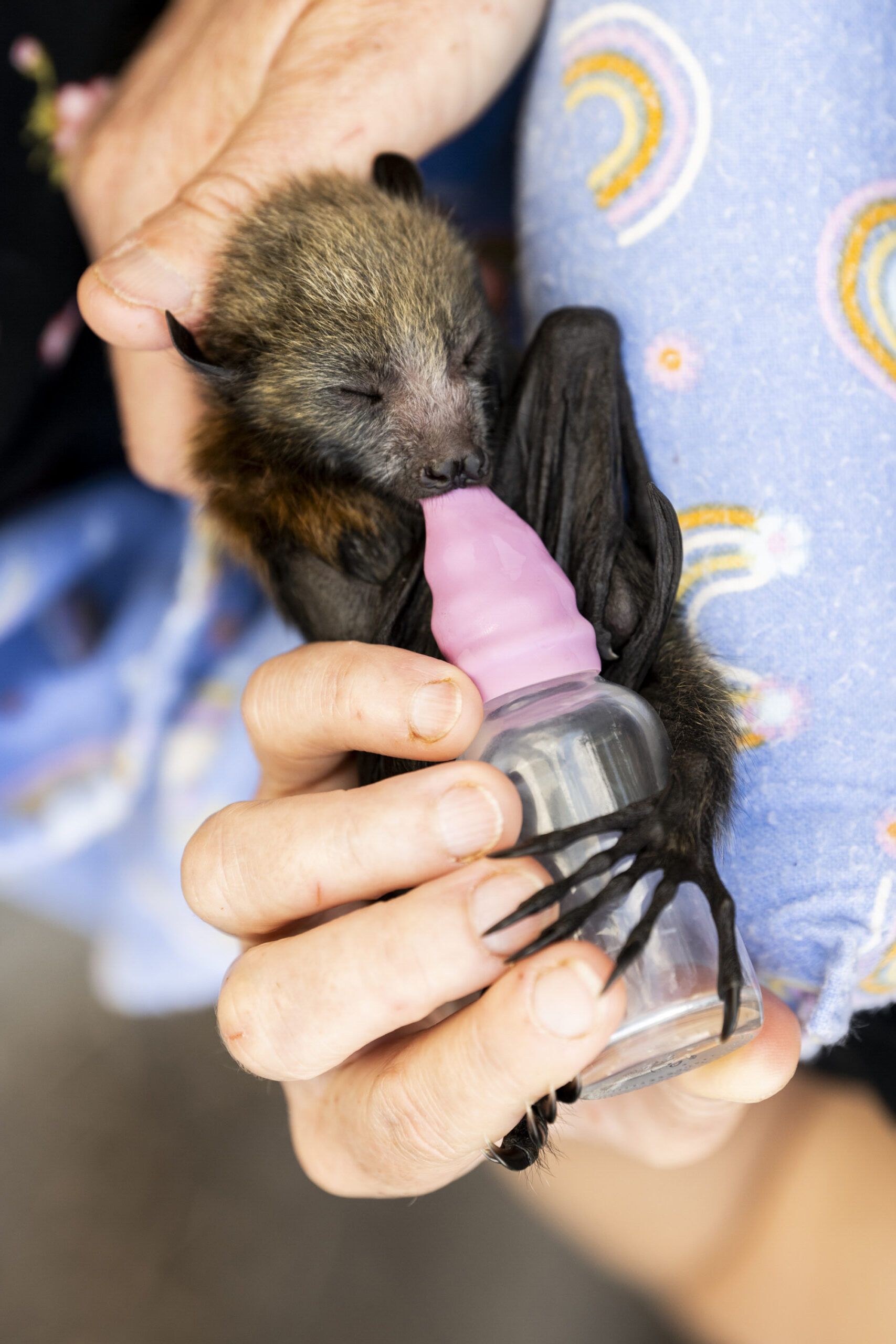
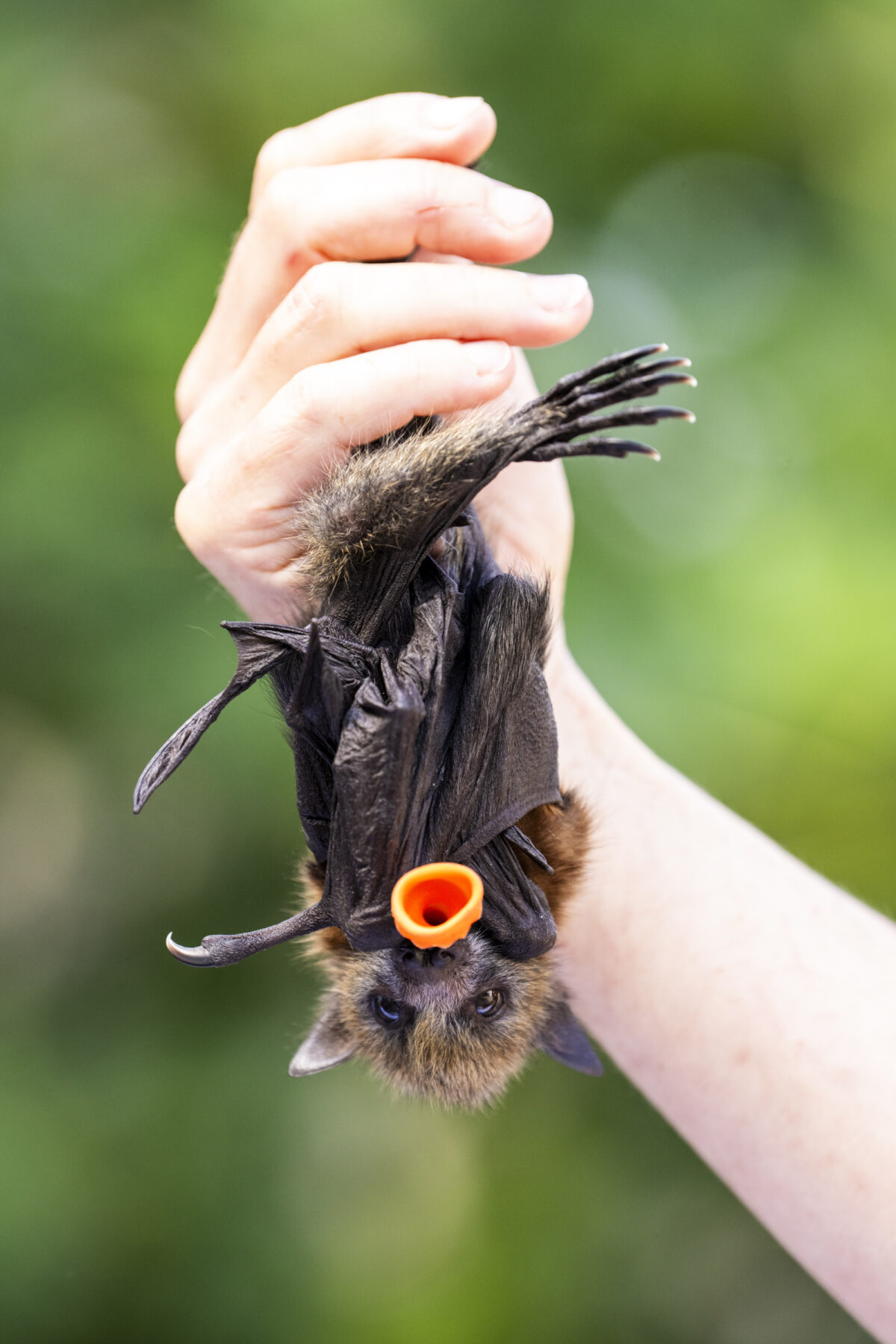
But the public value of these animals is not only as a tourist attraction. “From a biodiversity point of view, these animals are solid gold when you consider the pollinating services they provide. It’s in our best interest to ensure their survival in these urban environments.” And yet, Lawrence says, grey-headed flying-foxes are facing immense pressures. “They have a very low capacity to stabilise numbers as continued climatic events such as fires, heatwaves and unseasonal rainfall directly impact numbers and breeding,” he says. Friends of Bats and Bushcare was formed in 2003 and became incorporated in 2016, undertaking bushcare around Yarra Bend, revegetating habitat and creating a soft-release program for bats about to re-enter the wild.
Once pups are big enough, they need to be socialised and to practise flying. The organisation’s soft-release enclosure at Yarra Bend is purpose-built for rehabilitating flying-foxes. Every day, a group of volunteers chop up to 60kg of fruit, including apples, pears and melons. The fruit is combined with protein powder to feed and nourish the bats in the enclosure. The following morning, the volunteers clean up a carpet of ‘spat’– debris from the bats’ eating – and the same process proceeds until one day the pups are strong enough for the hatch to be left open so they can fly out when they feel ready for the wild. Some return and are left with the next “class” to build their confidence. More than 95 per cent leave permanently.
“We believe this is one of the best flying-fox soft-release programs in Australia, and I’d love to see a bunch more across the country,” Lawrence says. “Heat events are a major concern, consecutive days of 38°C to 40°C see desperate bats descend to the base of trees where they “clump”, and can die in great numbers. Heat can wipe out half a camp or more in one day. Here at Yarra Bend, we don’t have the understorey they are accustomed to, so the heat can be catastrophic, but we are working on installing sprinklers and improving the density of the understorey.”
A most-unusual season
In Adelaide, near the south-west limit of the grey-headed flying-fox’s range, Linda Collins, a flying-fox consultant for Fauna Rescue of South Australia, has seen a very different scene unfold among the local camps. With a successful winter flowering event, one camp grew to 50,000 individuals, where numbers would normally sit at 32,000. A possible explanation for that is the lack of food available across the south-eastern coast.
“In my 35 years of flying-fox research, this is the most unusual season I have ever recorded,” Linda says. “We were seeing premature babies come in at good weights (for example, a newborn had the weight of a six-day-old pup), but they were dead. Concurrently, 42 per cent of our adults were underweight.Our [premature-born] pup numbers went up too – from 0.04 per cent in 2018 compared with 0.12 per cent in 2023 – but again, they were overweight. I am still trying to figure out why. It strikes me that what is happening in Victoria is that we have a fallout population from the starvation event further north.
“Are they stuck there in a compounding situation because of what’s happened in Queensland and northern NSW? We just don’t know. If the nation-wide population of grey-headed flying-foxes is at 500,000, and Adelaide has 50,000, that means we have 10 per cent of the entire population. And we simply don’t know if the Adelaide summer flowering can sustain these numbers. We also don’t know if this is the beginning of something bigger and much more alarming – things seem completely out of whack and the species is maybe trying to tell us something.”
As rescue calls continue to come in, there are indeed a lot of unknowns regarding the crisis. What can’t be questioned is that, for a species where individuals only have one baby a year, we are looking at the possibility of losing almost the entire population of this season’s pups. Is it an extinction crisis in overdrive?
The passion of carers
Perhaps it is these sobering thoughts that have kept the carers and rescuers working into the wee hours, all season. It’s 2am in late December 2023, and Lynne Amore, from the Moonshadow Flying Fox Rescue and Rehabilitation Centre in Sale, 215km south-east of Melbourne by road, has just fed her last pup for the night. Because carers around Melbourne have been inundated, she has taken in more than 50 pups from Melbourne and regions further west and north such as Geelong and Wangaratta.
“We haven’t had the pup crisis in Sale or Bairnsdale, most likely because they have roosted elsewhere – the camps just aren’t as big this season,” Lynne says. “It’s a time where you feel like you need the old matchsticks to keep your eyes open. What keeps you going is knowing that these beautiful pups only have you for their survival. You need to only spend a short while with them to know that the flying-fox is a very special animal.”
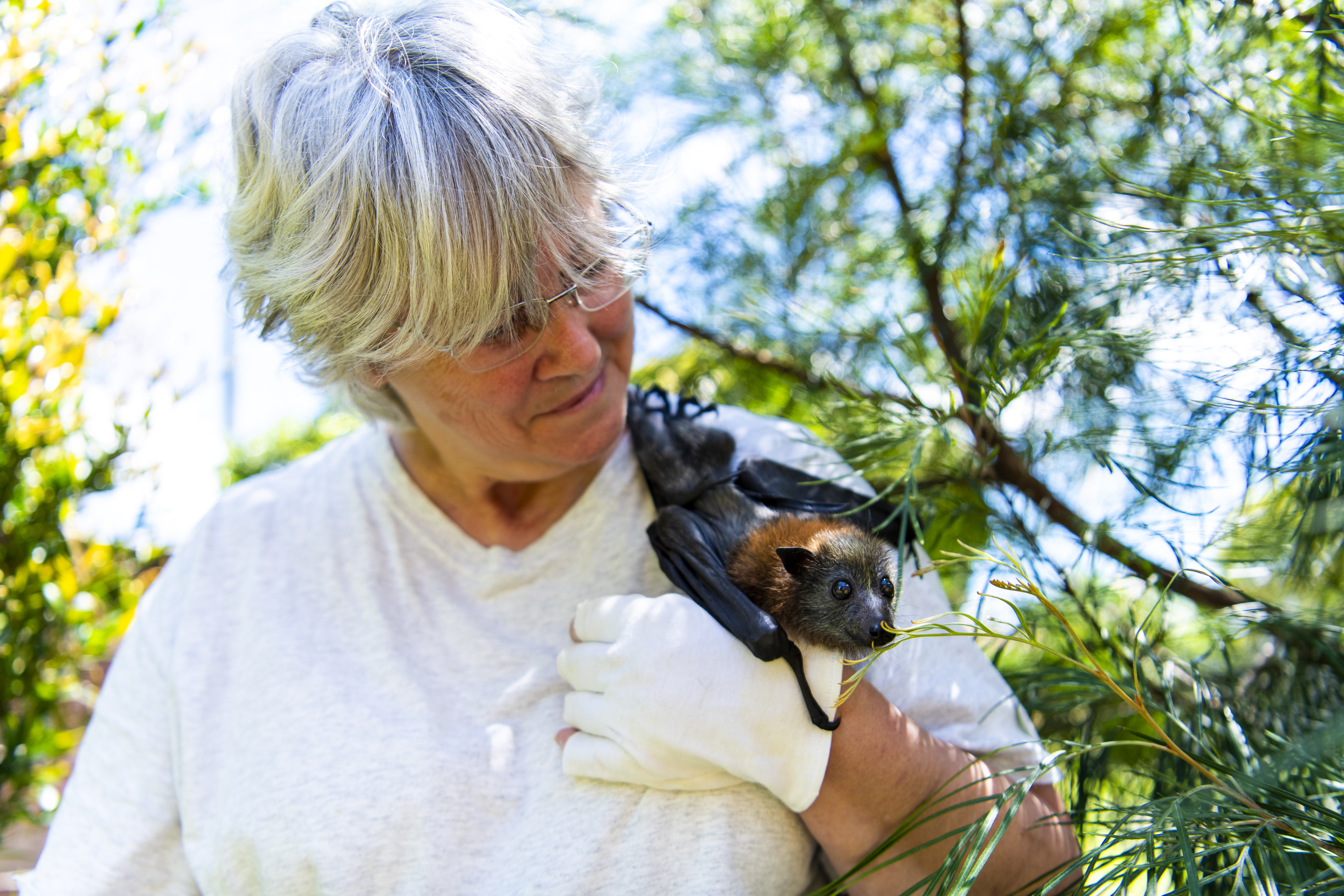
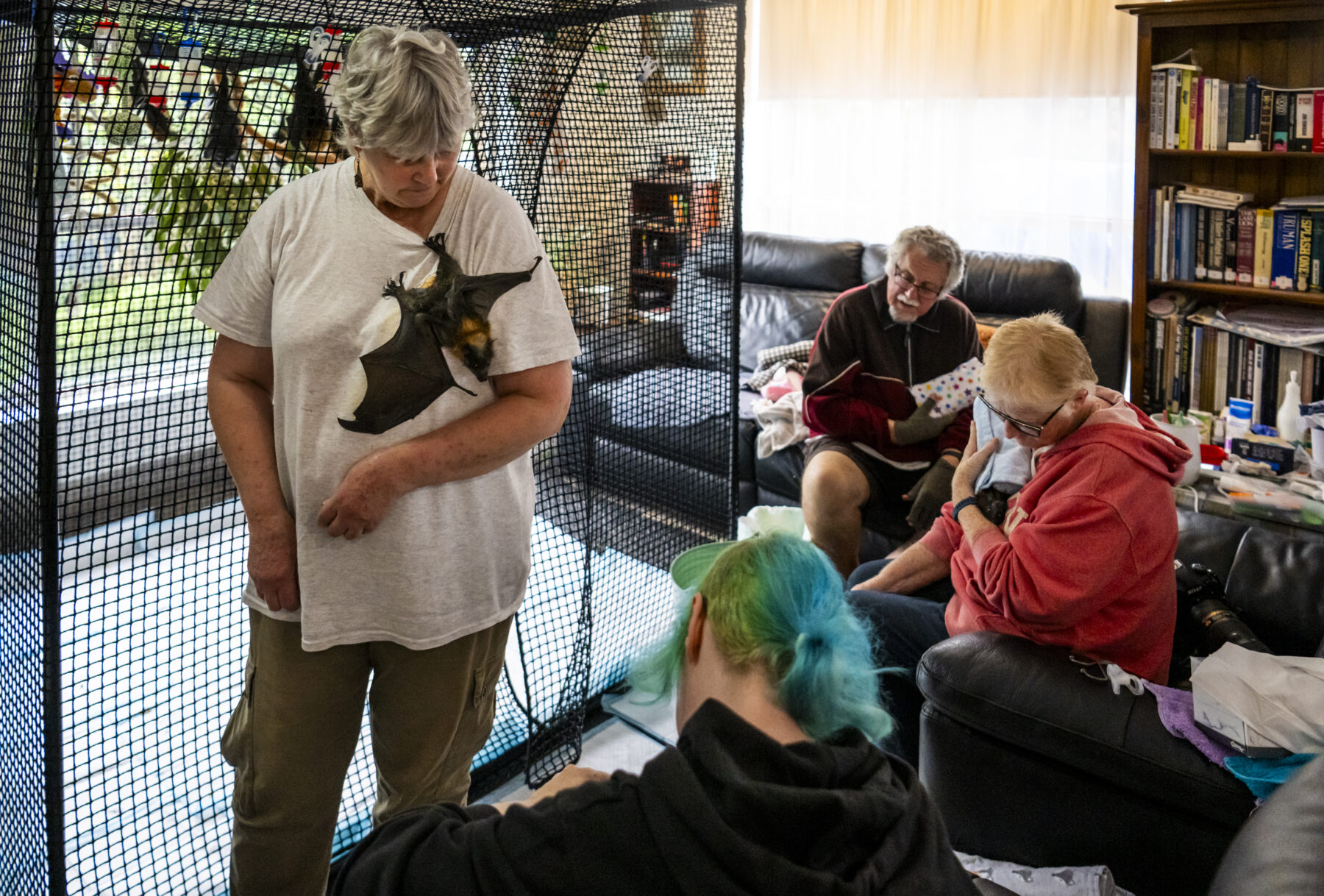
Lynne’s journey in bat care and conservation has made significant inroads into changing the attitudes of Sale locals to the mammals. She gives bat talks and collaborates with Wellington Shire, her local council, on education, tourism opportunities and flying-fox management. As a result, the council has undertaken revegetation for flying-fox habitat and a flying-fox management-for-conservation plan, turning a potential reason for public complaint into a tourism drawcard.
“And this is what the species needs – a coordinated approach, people on the ground, councils, and state and federal government all playing an essential role,” Lynne says.
As autumn approaches, the rehabilitated pups will soon graduate to the bat schools, such as the soft-release enclosure in Melbourne. After they’re released back into the wild, what’s to come for this generation of grey-headed flying-foxes is a big unknown – but it has the rescue and carer community very concerned.
To date, the federal Department of Climate Change, Energy, the Environment and Water does not have any approved conservation advice for this species, nor does it have an approved recovery plan, which was put on the to-do list in 2009.
Back in Adelaide, Linda Collins feels as if it’s Groundhog Day. “It feels like I have been fighting the same fight for 35 years,” she laments. “There is so much more to this animal than most could ever realise – their high level of intelligence, sophisticated social structures and the service they provide our forests.
“The pup deaths of 2023–24 have to be meaningful. We need conservation efforts and scientific research occurring alongside the work of the rescuers and carers, because without the grey-headed flying-fox, Australia’s fragile east-coast ecosystem will collapse.”




